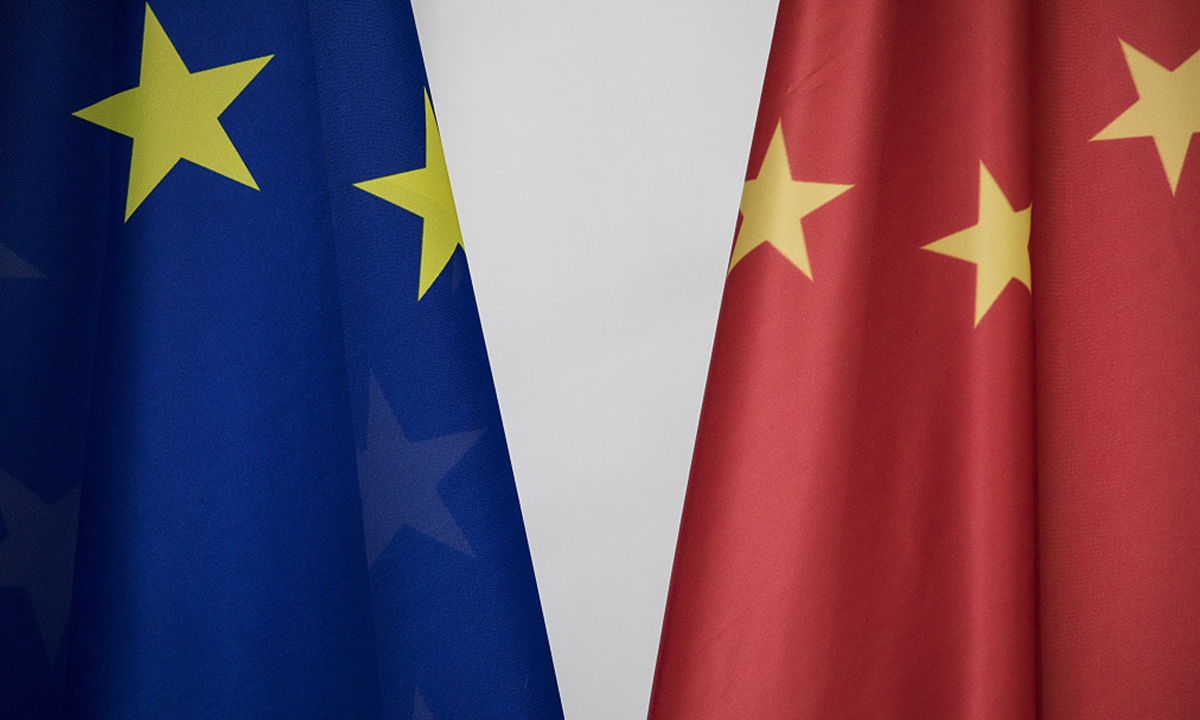China, EU send strong signal for finishing investment deal talks by year’s end
By GT staff reporters Source: Global Times Published: 2020/12/4 22:34:55
Both sides remain committed to completing talks by yearend

China EU Photo:VCG
China and the EU on Friday sent another strong signal that they are pushing to wrap up negotiations for a sweeping bilateral investment treaty (BIT) before year's end as planned and before US President-elect Joe Biden is set to take office in January, as senior officials held a "constructive" phone call on the negotiations.
Chinese Vice Premier Liu He spoke with Executive Vice President of the European Commission for An Economy Valdis Dombrovskis, and the two sides had "constructive communication" over the negotiations for the BIT, the Xinhua News Agency reported.
While the briefing statement did not offer details on the progress of the talks, it reaffirms that both sides remain committed to completing the negotiations before the end of the year as agreed by leaders, particularly given the crucial timing and certain complications, Chinese analysts noted.
"This is no doubt a very positive signal that negotiations remain on track and there will definitely be some positive result soon, though in a different form," Cui Hongjian, director of the Department of European Studies at the China Institute of International Studies, told the Global Times on Friday.
Cui said that it is "completely possible" that both sides can finish the negotiations by December 31. Even if there will be some delay, both sides will likely offer a "specific time frame" for the negotiations, he said, adding that the negotiations should be focusing on the wording.
Chinese and EU officials have repeatedly stated that they would reach a deal by the end of the year. The two sides have conducted a total of 35 rounds of negotiations, with the latest taking place between December 7 and 11. This year alone, the two sides conducted nine rounds of talks, underscoring the accelerated pace.
Given the confirmation from top leaders, "it's highly likely that both sides will complete talks before the end of the year," Pang Chaoran, an associate research fellow at the Chinese Academy of International Trade and Economic Cooperation, told the Global Times on Friday.
However, there remain some sticky points, including the EU's insistence of greater market access and sustainable development requirements, according to European businessmen and experts.
Also complicating the talks is the power transition in the US, where former vice president Biden, who has vowed to repair alliances to get "tough" on China. The EU may have been considering waiting until Biden is sworn in to build leverage in talks with China, experts noted.
However, that might not give the EU any extra leverage, given the massive trade and investment ties between the two sides, particularly European companies' interest in the Chinese market, analysts said.
During the first nine months, China replaced the US as its top trading partner, with total trade of 425.5 billion euros ($517.3 billion) compared to 412.5 billion euros between the EU and the US, according EU official data.
For China, however, the Association of Southeast Asian Nations, or ASEAN, has become the biggest trading partner, overtaking the EU, due to disruptions to trade posed by the COVID-19 pandemic. China-ASEAN trade is also expected to further strengthen, as China, ASEAN and other Asia-Pacific economies signed the biggest trade pact in the world, the Regional Comprehensive Economic Partnership.
"Although the EU shows fresh goodwill to the US ostensibly and politically, the bloc - to which its own interests come first - can't afford to weaken cooperation with China in the foreseeable future out of economic benefits," Cui said.
At a regular press briefing on Friday, Chinese Foreign Ministry spokesperson Hua Chunying said that China hopes the two sides can meet each other halfway in a bid to reach an agreement by the end of 2020, and promote China-EU economic and trade cooperation to a new level.
Posted in: ECONOMY